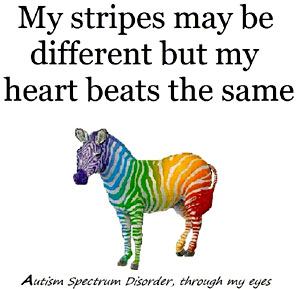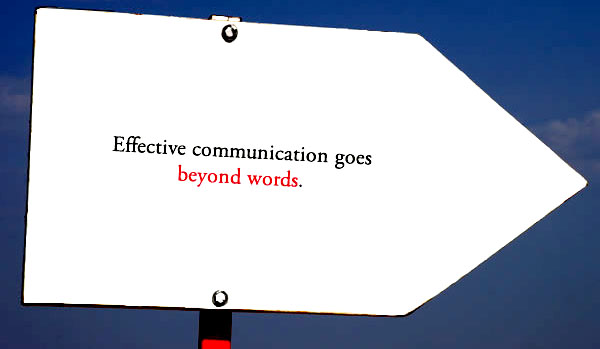Beyond Words
“Patience. Patience. Patience. Work to view my autism as a different ability rather than a disability. Look past what you may see as limitations and see the gifts autism has given me. I might be the next Einstein. Or Mozart. Or Van Gogh.”
-Ellen Notbohm,
Author of Ten Things Every Child with Autism Wishes You Knew
I’m amazed that it’s only been two years since I wrote Wordless, in which I explored nonverbal autism and its treatment, from the very personal perspective of one who was embarking on that journey with a patient for the first time. I ended that article by saying that “…the first step with an autistic, nonverbal patient is the same as with any other. You meet where they are, hold out a hand, and agree to walk together on a path that neither of you fully know, to an end that is as-yet unclear, joined only in a hope that through this partnership life will get better” (Karabin, 2013).
I can humbly and gratefully say that, with the efforts of many people—especially her parents—her life did get much better. She touched, and still touches, many lives. She opened my eyes to a power going far beyond words; the universal yearning of all people to thrive and live well.
This universal yearning for wellness is now something that I seek to address in my own life—as you’ve read—and with all my kids (okay, young adults). This is an article for the parents, loved ones, professional non-professional caregivers of those with an Autism Spectrum diagnoses because, as I look back on where that journey began but focus swiftly on where that journey is headed, I see nothing but awesome young adults with great supporters who at one time had difficulty hoping that the person in their life with ASD would—or could—lead an adult life. They had hope, but the challenges that their loved one faced made that hope difficult. That hope, paired with the yearning to live well, and guided by the “Life Seeker” in how that life is shaped, is key in living beyond words (CSA, 2014).
Different, But Not So Different
“About 25% of people diagnosed with an autism spectrum disorder could be considered to have nonverbal autism” but “the term ‘nonverbal autism’ is not a part of the diagnostic criteria…because there is no clear line between verbal and  non-verbal individuals with autism. Some people have the ability to speak, but lack the ability to use language in a meaningful way. Others can’t use spoken language, but are able to communicate with written or typed language, American sign language, picture cards, or digital communication devices” (Rudy, 2010).
non-verbal individuals with autism. Some people have the ability to speak, but lack the ability to use language in a meaningful way. Others can’t use spoken language, but are able to communicate with written or typed language, American sign language, picture cards, or digital communication devices” (Rudy, 2010).
“At this point,” Rudy continued, “there is no agreement on just what those differences are or how they impact any given individual” (2010). One thing is clear; every person desires to live a fulfilling adult life, regardless of those differences. This means “there is no one size fits all path to adulthood” and that the “most important factor in creating a plan is to focus on the individual…strengths, needs, challenges and preferences,” according to the Virginia Commonwealth University Rehabilitation Research and Training Center, who addressed how to help those on the Autism Spectrum transition to community independence in 2014 (CSA, 2014, p.1).
The Rehabilitation Research and Training Center developed the Community Based Skills Assessment as the first step for parents or any helper in creating such a plan, beginning as early as age 12. They quantified Adult life into eight Crucial Life Skills and defined the person on the ASD spectrum by peer group as “Life Aware” (12 to 16) “Life Explorer” (17 to 22) and “Life Seeker” (post-high school age, seeking education or employment) (CSA, 2014). We simply download the assessment, complete it and compare it.
But a definition just by peer age group is not meaningful for many on the spectrum, especially those deemed non-verbal, due to the developmental delays, individual physiological differences and relational impairments that complicate achieving these standards at the recommended ages. The role of any caregiver is to help their Lifeseeker (I’m using the CSA’s term) achieve the life that they seek based on their present abilities and strengths in meeting that life, not on their comparison to their peers. Individuality is key to independence.
Building the Bridges
“Most children with pervasive developmental problems…pay attention to their own ideas rather than the ideas of others…”
-Dr. Stanley Greenspan, ICDL, 2003
A tool which bridges the gap in assessment to action is dearly departed Dr. Stanley Greenspan’s DIR model and Floortime Approach, because the Interdisciplinary Council on Developmental and Learning Disorders (2003) designed  the model around helping patients achieve developmental milestones based on their own level, not peer group. In 2013 I had found DIR-Floortime as a method that I would investigate. Hundreds of hours of e-seminars, hundreds of hours of client-based practice and many hours spent pouring over the Clinical Practice Guidelines later, I find that the DIR model is key to any relationship based approach to helping Lifeseekers attain that life.
the model around helping patients achieve developmental milestones based on their own level, not peer group. In 2013 I had found DIR-Floortime as a method that I would investigate. Hundreds of hours of e-seminars, hundreds of hours of client-based practice and many hours spent pouring over the Clinical Practice Guidelines later, I find that the DIR model is key to any relationship based approach to helping Lifeseekers attain that life.
Simply put, caregivers use the DIR model to define where their Lifeseeker is on a scale of five milestones ranging from “Shared Attention and Regulation” to “Creating Emotional Ideas” and then build life skills toward the baseline peer group recommended in the CSA. Here is a handy assessment chart to find the developmental milestone that your Lifeseeker is in right now.
From there, it becomes the goal of the caregiver to create learning exercises—like doing laundry at home or trips to the grocery store—based on developmental ability to build the Eight Critical Areas of Functional Life Skills using DIR-Floortime Semi-structured problem-solving interventions (CSA, 2014) (ICDL, 2003).
(The ICDL calls “the child” whom we refer to as the Lifeseeker.)
During these exercises the caregiver “becomes the representative of what is outside the child and the foundation for reality…fostering emotional differentiation and higher levels of abstract and logical thinking.” They would “create such bridges, always following the child’s lead, the child becomes more” independent but “it is essential…to recognize that a child must first master missing foundation pieces, such as a continuous flow of two-way gestural communication, before the child can begin negotiating more advanced levels of relating and thinking” (ICDL, 2003, p.279).
Making the Milestones
“In this way, over time, a child will become engaged in all the marvelously varied themes of life: closeness and dependency; assertiveness, initiative and curiosity; aggression, anger and limit setting and pleasure and excitement.”
-Dr. Stanley Greenspan, ICDL, 2003
The over-all goal of these exercises or outings would be to foster “developmentally appropriate practices that involve semi-structured problem-solving tasks and specific therapeutic interactions…geared to each functioning level, underlying processing capacities…individual differences and regulatory patterns and build basic processing capacities and provide the support that helps children become engaged, attentive and regulated during interactions…” (ICDL, 2003, p.271-275).
Wherever a Lifeseeker falls in the assessment of their present abilities our goal is to help them grow to the next milestone throughout the exercise by using some active tactics.
- Engaging and Synchronizing with the Lifeseeker—following their lead, doing what they’d like to do safely, within the frame of the exercise or outing.

- Opening and Closing “Circles of Communication” building on the one before.
- Expand Circles using playful obstruction/challenge/guidance.
- Increase the Lifeseeker’s emotional range, tolerance and adaptivity to their emotions and the world as stimuli.
- Expand the range of processing and motor-planning, building a bridge for the Lifeseeker to “work together toward an emotionally meaningful goal” with anyone (ICDL, 2003, p. 264).
See number five there? Working together toward an emotionally meaningful goal is what moving beyond words is all about. Our kids’ life goals may be totally separate, or we may look at their goal and see it as small. Realize that to the Lifeseeker that really is the life they seek. That is their dream and it is powerful. We must never forget that the dream to live well is universal to the same degree that the shape of that dream is personal.
We must always be honored to be the person who is given the trust and responsibility to walk alongside the Lifeseeker into that life beyond words, until it is time for them to walk, ever increasingly, on their own with their head high.
__________________________________________________
Interdisciplinary Council on Developmental and Learning Disorders (2003) Clinical Practice Guidelines: Redefining the standards of care for infants, children, and families with special needs. ICDL Clinical Practice Guidelines Workgroup. Bethesda, MD. Retrieved from: http://www.icdl.com/bookstore/icdl-clinical-practice-guidelines
Milestone Chart Retrieved from: http://www.icdl.com/DIR/6-developmental-milestones/functional-emotional-developmental-levels-basic-chart
Rudy, Lisa Jo. (2010). What Is Nonverbal Autism? Retrieved from: http://autism.about.com/od/autismterms/f/nonverbal.htm
Virginia Commonwealth University Rehabilitation Research and Training Center (2014) Community Based Skills Assessment (CSA): Developing a Personalized Treatment Plan. Autism Speaks. Retrieved from: https://www.autismspeaks.org/family-services/community-based-skills-assessment


